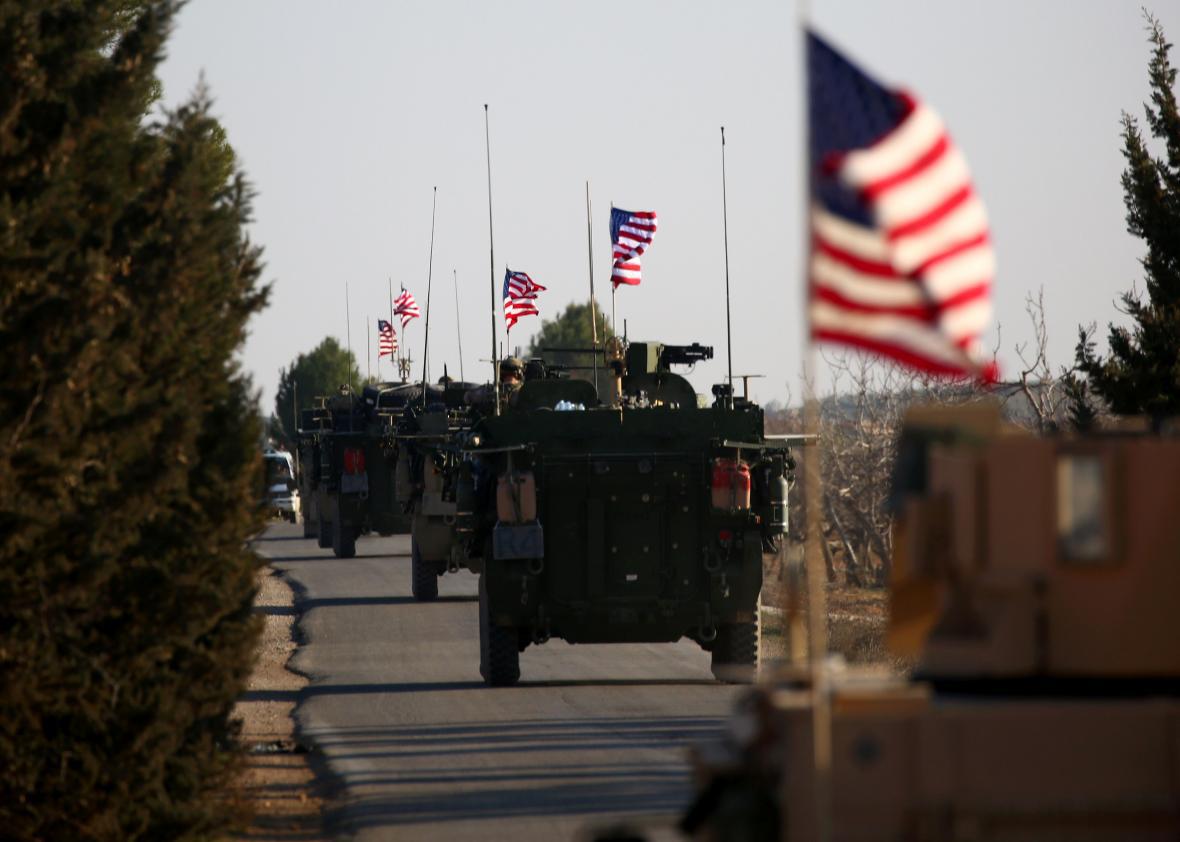Along with a proposed budget that would boost spending on the military at the expense of basically every other function of the federal government, the Trump administration also appears set to deepen U.S. involvement in the war in Syria, which entered its seventh year this week.
The Washington Post reports Thursday that the U.S. military is drawing up plans to deploy as many as 1,000 additional troops to Northern Syria ahead of a planned offensive on the ISIS capital, Raqqa. This would nearly double the number of U.S. troops in the country. It follows a deployment of about 400 troops to the area in recent weeks.
The troops will play a support role for local anti-ISIS fighters and won’t be involved in combat, at least initially, although some have reportedly already come under fire. So far, the deployment seems to be less about fighting ISIS than keeping members of the fractious anti-ISIS coalition from fighting each other.
The main U.S. ally in the campaign for Raqqa is a coalition of Arab-Kurdish fighters known as the Syrian Democratic Forces, which is largely dominated by fighters from the Kurdish rebel group YPG. The Turkish government, which also has troops in the area, views the YPG as an offshoot of the Turkey-based militant group PKK and sees them as a terrorist threat as great if not greater than ISIS. This is why Turkish forces have threatened to attack the SDF-held city of Manbij. Turkey has also said it would be willing to send its troops to assist in the Raqqa mission, but only if the U.S. cuts ties with the Syrian Kurds, which the U.S. so far does not appear willing to do. (That the United States has decided its best bet for restoring the stable status quo to this region is a group of literal anarchist revolutionaries is one of the great ironies of our age.) Meanwhile, Russia, an ally of President Bashar al-Assad, has mistakenly bombed both Turkish forces and the U.S.-backed SDF this year. U.S. forces are attempting to keep the peace between all the competing armed groups in the region. Perhaps at some point they may finally get around to attacking ISIS.
So far, we haven’t seen the kind of overt U.S.-Russian partnership to fight ISIS that Trump controversially supported during his campaign, although there has been some indirect cooperation. U.S. airstrikes around the ancient city of Palmyra likely played a role in helping Russian-backed Syrian military forces recapture the city from ISIS earlier this month, though the Pentagon has denied that it coordinated its strikes with Russia. That operation was also supported by the Shiite militia, Hezbollah, which supports Assad’s government and is backed by Iran—a country, that you may recall the Trump administration putting “on notice” a few weeks ago, in what seemed like an oblique threat of military action.
As the president might say, nobody knew Syria could be so complicated.
